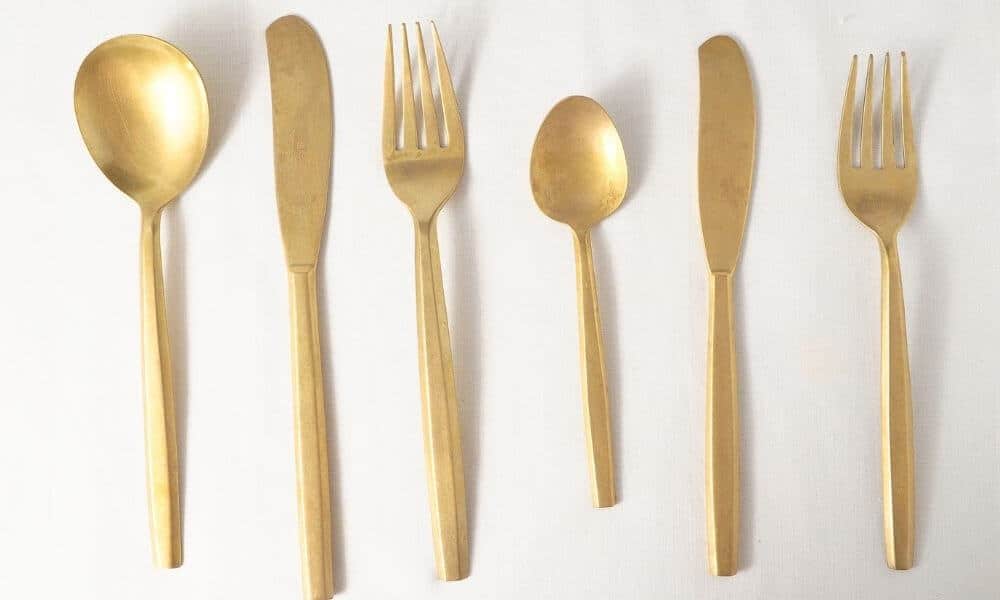You might think that silver is heavy and dark, but in fact, silver is a brilliant white metal with a subtle sheen. It’s also a great choice for flatware because it’s extremely durable and won’t tarnish even when immersed in water for extended periods of time. In this article, we’ll explore the ways that you can remove tarnish from silver, how to clean sterling silver flatware, and some other small tips for choosing the right flatware. For more information on how to choose the right flatware, check out our article on How to Choose the Best Flatware.
How To Remove Tarnish From Silver

There are a few things that you need to know before you start cleaning it. The first is that silver is a very oily metal so you shouldn’t scrub it with a metal brush or knife. The other important thing to know is that silver is an alloy and therefore has a lot of impurities. In fact, if you were to take a look at the chart on the back of the manual for the spade, you’ll notice that there’s a large number of pure silver elements. That means when you’re cleaning it, you don’t want to sully your spade with minerals, soil, or Disappointing conclusions! On the contrary, it is a beautiful metal with a rich history and many interesting properties. It’s easy to clean, it’s bright, and it fills a lot of pots and vases with its attractive color. When it comes to choosing the right flatware, it is the most versatile of all.
How To Clean Sterling Silver Flatware
To clean sterling silver flatware, the first thing that you need to clean is sterling silverware. You should do this as soon as you get the item, even if you’re just sitting in a cupboard or drawer. The best way to clean your silverware is with a good natural cleanser. Some good cleansers for include OxiClean Pro, SilverStone’s Silver Works, and Pro Silver. Another option is to use a light soapy water cleanser, but be careful! You don’t want your cleanser to sud up your silverware or else you’ll have black marks show up on the kitchen floor. If you’re only going to use the silverware a few times a week, a heavy cleanser with lots of ads will do you no good. Additionally, you don’t want to take up too much space in your kitchen so go with a light cleanser.
Light Scrub
Use a gentle scrubbing motion when cleaning sterling flatware. This will remove the impurities and build-up without hurting the silver. For best results, use a sponge or a handheld flushing machine.
High Heat
If you want to get the most out of your power scrubbing, use a high-heat scrubbing motion. This will remove impurities from the surface of your silverware while also heating it. For best results, use a handheld hot scrubbing machine.
Do The Spade
The spade is perhaps the most versatile of all the flatware types. It’s a great tool for applying oil or butter to the spindle to harden it. For best results, use a machine that’s specially designed for spade cleaning.
Don’t Over-Mix
Mixing chemicals, including preservatives and oil additives, can cause build-up and eliminate the best qualities of your silver. That’s why it’s essential to over-mix with a gentle oil or butter before seasoning it with a chemical additive. For best results, use a gentle oil or butter and begin with a couple of drops. This will prevent you from over-mixing.
Wrapping Up: The Best Tips For Choosing The Right Flatware

The cleaning process for silver is much the same as for other metals: you want to avoid excess contact with water, impurities from scrubbing too hard, and excess sodium from too hard scrubbing. In this case, you need to choose the right scrubbing motion for the metal you’re cleaning: a gentle scrubbing motion is actually a good idea. Use a gentle scrubbing motion when choosing the right metal to clean. The best way to clean the silver is with a mild scrubbing motion that doesn’t scrub too hard. For best results, choose a mild scrubbing motion that’s easy on the hands. For best results, be sure to follow these tips for choosing the right silver:
– Look for a metal that’s easy to clean.
– Take your time when scrubbing.
– Use a medium-sized scrub brush.
– Scrub in small areas. – Don’t scrub too hard.
– Use a mild scrubbing motion.
– The best results will come from a gentle scrubbing motion.
Conclusion
The cleaning process for silver is similar to other metals: you want to avoid excess contact with water, impurities from scrubbing too hard, and excess sodium from too hard scrubbing. Depending on your needs and budget, buying a set of gloves or a new spade might be a good idea. Simply put, you don’t want to end up with a bucket of black marks on your kitchen floor because you over-compensated for the water’s too-soft touch. If you’re looking for a high-quality, low-cost spade for a reasonable price, you should definitely consider this product.

